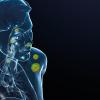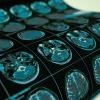Dr David C Gaze looks at the history and issues surrounding adopting high-sensitivity cardiac troponin testing.

Cardiac markers have been integral to the diagnosis and management of patients with acute cardiac pathology for over 60 years. In 1954, aspartate transaminase; more common to us now as a part of liver function testing, became the first “cardiac marker”, following a small laboratory study of dogs undergoing induced acute myocardial infarction (AMI) by clamping of the coronary arteries.
The main stay of diagnosis of AMI for over 30 years utilised non-specific muscle enzymes (eg creatine kinase [CK]) or myoglobin. These are often elevated in non-cardiac conditions, such as renal failure and muscle pathologies. The advent of cardiac troponin T (cTnT) and cardiac troponin I (cTnI) assays revolutionised AMI diagnosis in the late 1990s.
However, it took a number of years to establish their use in mainstream clinical chemistry. At that time, discreet automated immunoassay analysers were emerging with assays with long turnaround times. These were still far better than analysis of CK isofoms by electrophoresis that took hours to complete, or CK-MB mass assays, often batched twice daily, much to the detriment of the patient lying on a trolley in a corridor in A&E.
The holy grail
Early troponin assays had a high clinical cut-off for AMI. This was akin to the CK-MB cut point, as determined by the World Health Organization 1979 AMI diagnostic criteria. The early assays were a perfect diagnostic tool, providing a clear dichotomous answer to the diagnosis of AMI. Patients without AMI were troponin-negative.Those with AMI were positive. It was a brilliant test – the holy grail of laboratory medicine.
Patients had to wait 12 hours for diagnosis; only to wait further to find a suitable in-patient bed or to be sent swiftly in the direction of the exit – on foot. For years we basked in the glory no other diagnostic test provided; until HbA1c for diagnosis of diabetes mellitus, but that is another story.
After the halcyon years of the 1990s and the “noughties” it became more apparent that troponin may not be all that it was cracked up to be. As measurement became common with the advent of large throughput immunoassay analyers joined up on tracks, churning out results in as little as 10 minutes, not to mention the significant reduction in cost, anyone and everyone was ordering troponin– and a second, third or fourth troponin if they did not believe the first. A few spanners were then thrown into the works.
The first nemesis was the elevation of cTn in patients with renal failure, followed by a plethora of other non-cardiac conditions demonstrating elevation of troponin in the absence of overt AMI. Furthermore, troponin was elevated in the “healthy” undertaking arduous physical exercise, such as marathon running without what seemed, any detrimental effect. This created clinical confusion and much head scratching. It also induced brow mopping in industry for fear of potential litigation. For a test we fell in love with, we suddenly became cautious of its utility even fearful of its existence.
Revolutions
Move on a few years and a second cardiac biomarker revolution occurred: the advent of high-sensitivity cardiac troponin (hs-cTn) assay. How could this great test possibly be an even better test? A question asked by many.
Hs-cTn has brought about three main clinical changes. Firstly, the late diagnostic window of six to 12 hours has rapidly shifted downward, with guidelines currently in common practice using an admission and three-hour protocol.
There is also a drive to adopt the use of a zero-two or even zero-one hour protocol and a zero-hour rule-out decision if hs-cTn is below the assay limit of detection. These protocols, however, are still under investigation and have not been universally adopted.
The second revolution was that it became apparent that the fear of clinical false-positives in non-cardiac pathologies was not warranted and many studies demonstrated poor prognosis in those who were troponin-positive in the absence of AMI. The caveat to this is the exercise cohort. Troponin testing has rapidly moved from an AMI event marker per se, to a risk marker representing cardiac cell death. The pathophysiological mechanisms of troponin release in non-cardiac conditions are still a matter of great debate. That said, hs-cTn measurements are determined by immunoassay technology that is somewhat dated. These assays really challenge the performance of instrumentation at the low end, especially separating out background noise from signal generated by antibody-antigen reactions. As with any immunoassy test, troponin assays are not immune (pardon the pun) to analytical false-positive results from exogenous or endogenous substances. Most notably of late is that of biotin interference. These incidences are relatively infrequent given the number of troponin measurements made daily on a global scale. The savvy scientific
or clinical laboratarian should be aware of potential interferences and suspect them when a troponin result does not fit the clinical presentation. Remember – treat the patient and not the laboratory result.
Armamentarium
Thirdly, the distribution of hs-cTn within the reference interval of a healthy population previously deemed of no clinical significance may carry long-term prognostic value. Maybe hs-cTn could become part of our armamentarium of health screening tools in the same way we use cholesterol or C-reactive protein. The value of this has yet to be substantiated, but large epidemiological cohorts are now being studied to identify a potential novel use of troponin measurement.
The utility of hs-cTn measurement has undoubtedly been a success and is of great benefit to patients where early diagnosis equates to early interventions and better prognosis. It is also apparent that there are novel uses of measuring hs-cTn outside of the classical chest pain patient with suspected AMI. There are exciting times ahead where research will rapidly change into routine clinical practice to better serve the patients using our laboratory services.
Dr David C Gaze is a Lecturer in Clinical Biochemistry and Director of Employability at the University of Westminster. He is also Co-Editor in Chief of Practical Laboratory Medicine.
Dr Gaze is presenting a lecture entitled “High-sensitivity troponin: current guidelines, benefits and challenges” at IBMS Congress at 9am on Wednesday 25 September at the ICC, Birmingham.
Image credit | Science Photo Library




